Stakeholders
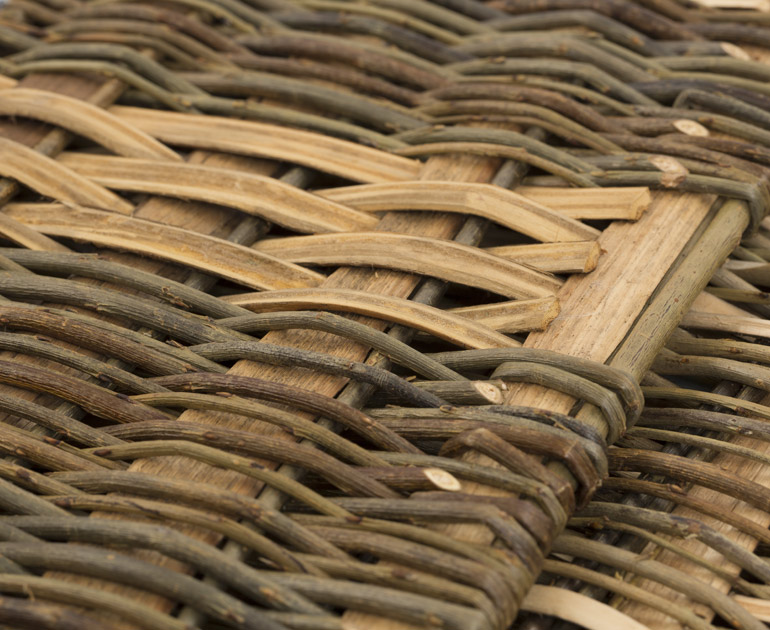
The Museum of English Rural Life has one of the most significant collections of British basketry in the UK, with over 620 baskets, basketwork objects and basketmaking tools. The Stakeholders project encouraged knowledge and skills sharing between established and up-and-coming basket makers. Each of the participants was commissioned to make a basket or piece of basketwork to be accessioned into the Museum collection. The makers were given free rein with what they chose to make: whether it be to address gaps in the collection, to produce replicas of particularly vulnerable baskets in the collection, to make something inspired by a piece in the collection, or to make something representative of them as a maker. The project was awarded a £7000 grant from the Radcliffe Trust.
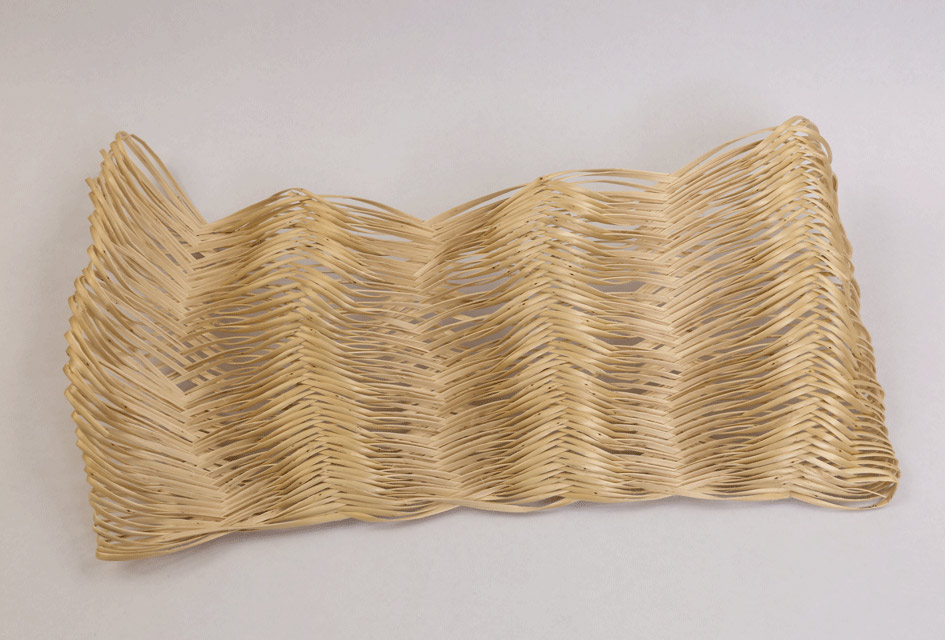
‘Loosen the Corset’ by Karen Lawrence
This panel is made of white willow skeins woven using complex linking. Karen Lawrence was intrigued and inspired by a Victorian basket with a lid of skeined willow – made from the willow’s outer skin after the bark has been removed.
In her words, ‘an enormous amount of work would have been done to prepare the skeins for use and to use them in that way, tightly packed on their sides seemed somewhat bonkers’. The construction reminded Karen of a corset, and she imagined the piece ‘set free from its frame/constraints, as though it had been allowed to relax’. She used a weaving technique called ‘complex linking’, taught to her by Shuna Rendel, who first saw it used to make hammocks in South America. The final piece has flowing contours which largely developed freely from the tension of the willow rolling around itself.
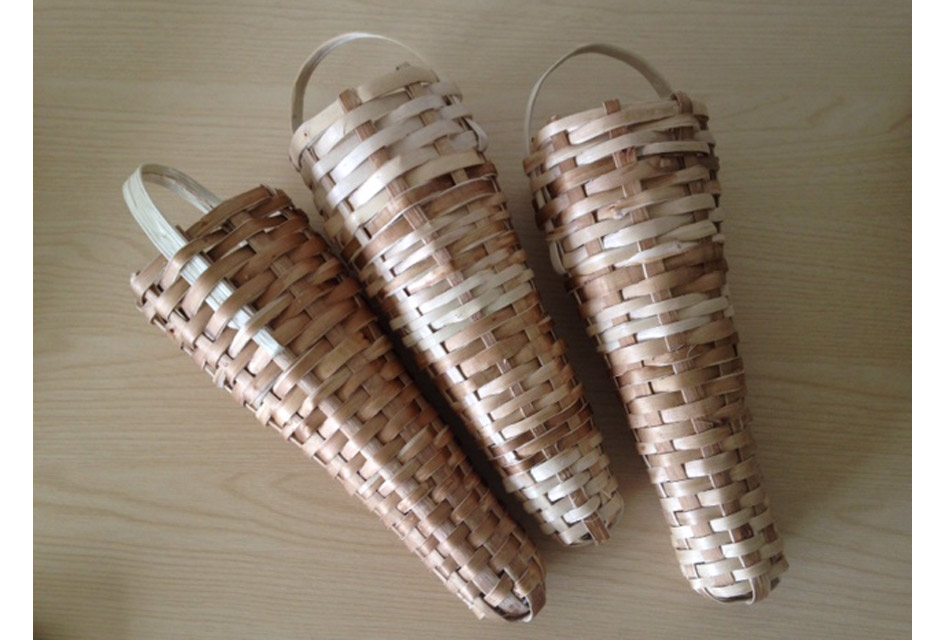
Pottles by Annemarie O’Sullivan
Annemarie O’Sullivan made three hazel pottles to replicate the two very fragile willow examples in The MERL collection which date from the 1860s. A pottle was a mid-nineteenth century type of fruit basket worn round the waist by women when picking and marketing strawberries and raspberries.
Annemarie was interested in split wood basketry as she lives in an area with plenty of coppiced hazel and sweet chestnut. For the pottles, she worked with green hazel spending time preparing the materials, splitting off ribbons and shaving them down with a knife. The pottles are the same dimensions as the ones in the collection. The dark one uses the outside of the hazel rod and the paler parts are from inside the rod.
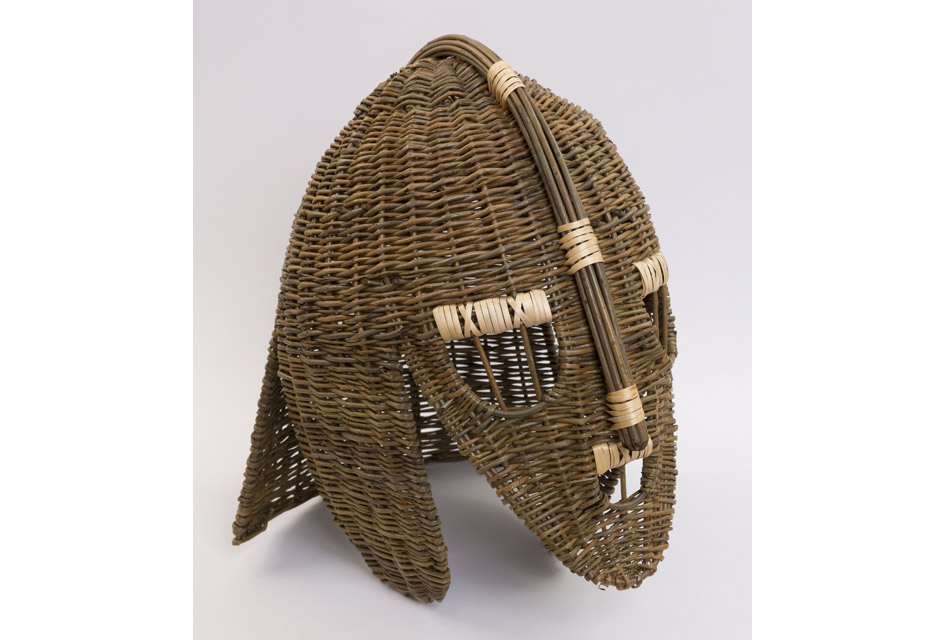
Sutton Hoo Helmet by Bunty Ball
Bunty Ball was inspired to make a basketwork version of the very ornate Anglo-Saxon helmet from Sutton Hoo, Suffolk. The original metal helmet was discovered in the seventh century burial mounds at the cemetery site in 1939.
This helmet is a smaller version of the basketwork Sutton Hoo helmet Bunty made in 2006. The first prototype helmet was made using buff willow, as it is easier to control than brown willow. It was about 14’ high and about 10’ in diameter. The helmet Bunty made for the Museum is scaled down in size to about 18”x 9”. The method used is the same as for the large one but using slightly finer rods all round.
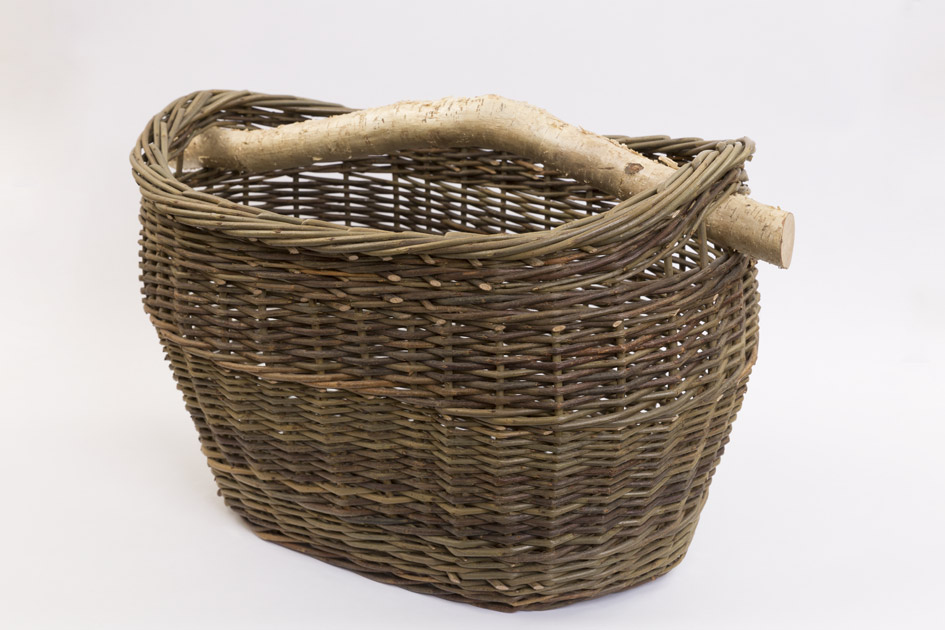
Basket with hazel handle by Sue Kirk
Sue Kirk’s oval basket is inspired by shopping baskets from the 1950s and is typical of Sue’s work.
The basket is designed to be non-functional. The hazel for the handle was grown in a tree guard to protect it from deer. The result is that the bark is blanched, so it looks silver, and the hazel twists because of the tree guard to create some beautiful effects. Sue wanted ‘to make a basket from local materials to show the beauty of the materials.’
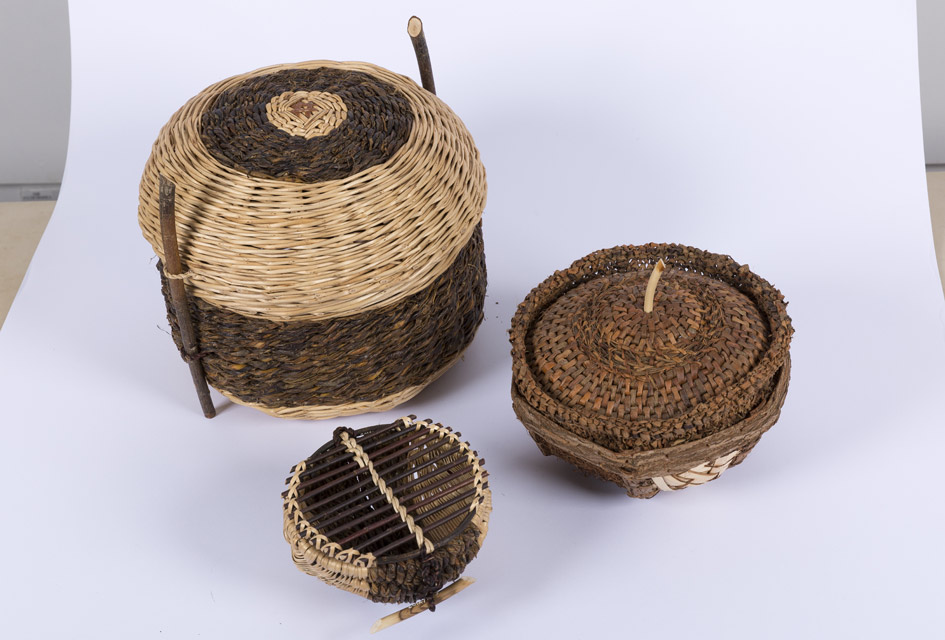
‘Willow 1’ by Maggie Smith
‘Willow 1’ is a nest of three baskets all made from willow. Within the three baskets every part of the willow has been used, from the leaves to the roots.
Maggie aimed to use as many different techniques as possible to celebrate the versatility of willow through ongoing exploration and experimentation. The piece was inspired by the wonderful variety of traditional skills and materials demonstrated within the museum collection. Her basketry career was started by an appreciation for these traditional skills and a desire to learn more about them. Yet she also wanted to demonstrate that working with traditional materials and keeping traditional skills alive can be enhanced by each generation pushing these materials and skills and continuing to develop them.
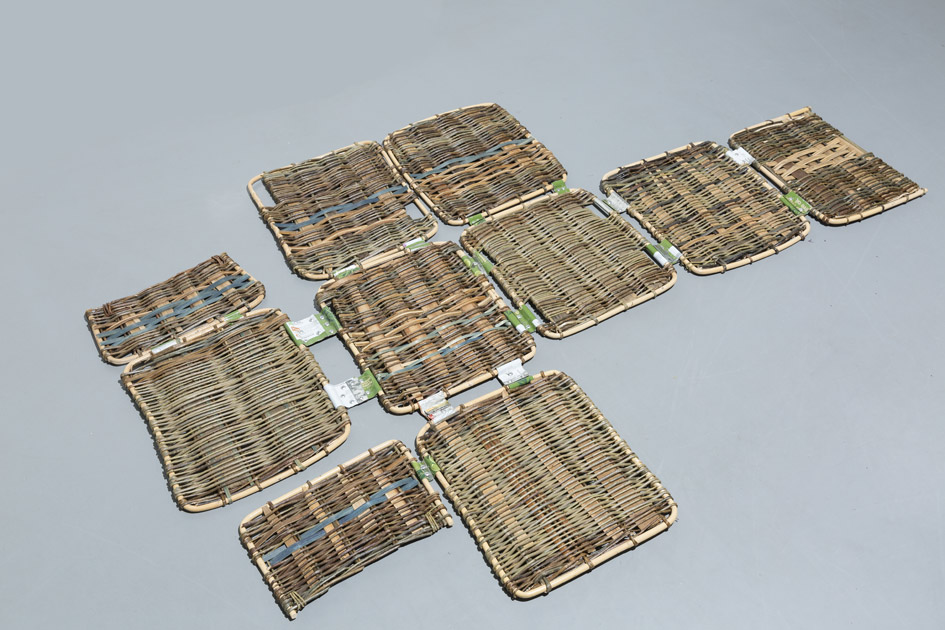
‘We hope you like this product’ by Hilary Burns
This piece consists of 10 woven panels which can be folded together or opened up flat. It was inspired by the ingenuity of a folding post office basket in The MERL’s collection.
Hilary was impressed by the problem-solving solutions the maker of the post office basket had come up with. She liked the idea of making something compact that would not take up a lot of empty space as baskets often do. This piece doesn’t make itself into anything useful, it is meant to be fun to play with and can be arranged in various ways for display: flat on a wall, or standing upright half-opened concertina style, or unfolded and made into a type of shelter. Re-folding it so that it stacks flat is the puzzle! Materials have come from a variety of sources: steam bent rattan imported from Indonesia, willow in natural bark colours grown locally, bamboo strips dyed in the indigo vats, boiled, split and shaved oak, and split and shaved bramble.